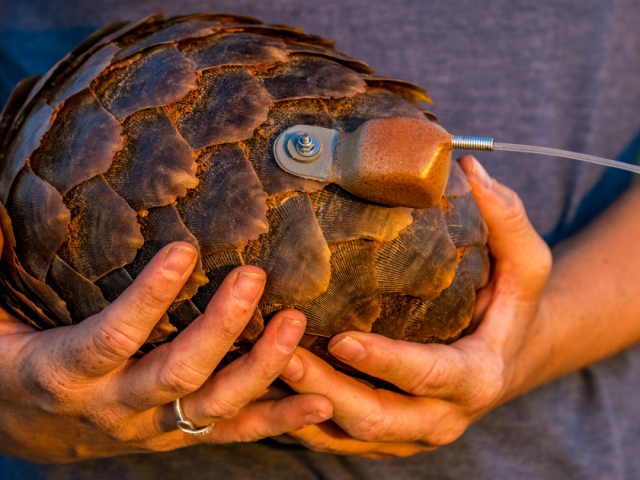The sacred Osun River in Nigeria has recorded the highest measured level of microplastics in a river in the world, and researchers are calling for a ban on single-use plastics.

Microplastics are everywhere, and Dr Gideon Idowu, an Environmental Chemist at Nigeria’s Federal University of Technology Akure (FUTA), has conducted a massive research project across eight African countries to understand their levels and impacts in riverine and marine systems.

Idowu and his team have published some of their findings in the “Journal of Hazardous Materials Advances”, in an article titled “Why Nigeria should ban single-use plastics: Excessive microplastic pollution of the water, sediments and fish species in Osun River, Nigeria”. Idowu said that “the levels of microplastics that we found in the Osun River were very high, but for one of the sites, the levels are really, really high, at 22,079 particles/litre”. The Osun River is a UNESCO world heritage site and a vital water source for many communities in Southwestern Nigeria.
Over 300 million tonnes of plastics are produced every year around the world, and the OECD has forecast that by 2060, fossil-fuel based plastics would amount to 1.2 billion tonnes, of which over one billion tonnes may go to waste. Microplastics have infiltrated almost all environments and organisms, and the particles, says the OECD, kills more than a million seabirds and 100 000 marine mammals per year.

In response to the hazard, Greenpeace International has now called for a Global Plastics Treaty, and newspaper headlines reflect public anxieties about the pervasiveness of microplastics: “We inhale a credit card’s worth of microplastics each week,” reports the BBC; “Potentially toxic microplastics are found in 100 percent of human placentas tested by scientists,” reports the Daily Mail; “Microplastics found in sediment layers untouched by modern humans,” reports Futurism; “Researchers find a massive number of plastic particles in bottled water,” reports NPR.
Microplastics are fragments of any type of plastic less than 5 mm in size. Talking about microplastics in river waters, Idowu said “Ordinarily, we wouldn’t see the majority of them if we didn’t put them under the stereo-microscope that enabled us to detect and count them. You would probably just think it’s normal water that’s a bit turbid. You wouldn’t know that those things are there.”
Idowu’s study, which is funded by a Jennifer Ward Oppenheimer Research Grant of $150 000, highlights how microplastics are formed from the breakdown of larger plastic items, as well as from manufacturing processes that generate plastic pellets and nurdles. These tiny particles have been found to wreak havoc on ecosystems, affecting organisms’ physiological functions and reproductive capabilities. They also have the potential to adsorb harmful chemicals, posing a threat to any organisms that ingest them.
The study on Osun River was conducted to assess the overall levels of microplastics in the water, sediments, and commercially important fish species in the river.

Sampling locations were strategically chosen along the river, including areas upstream and downstream of the Oshogbo metropolis, with a population of over 714 000. Idowu said “the particular site where we got the very high value happens to be close to the city centre, where people throw in all sorts of waste, including plastics. It was difficult to access the river sediments in the first place, because everything we lifted up was just one plastic item or the other. That tells you the magnitude of pollution of the river, and probably explains why microplastic levels were extremely high for that location, which was one of the five sampled locations on the river. But what we did not expect was that the microplastics found at this location would be the highest reported so far, for a river water globally, as it has now turned out to be”
The microplastics were of diverse types. Analyses revealed “seven polymer materials, including acrylonitrile butadiene styrene (ABS) and ethylene vinyl acetate (EVA), that have not been commonly reported for river environments.” Fish species crucial for local economies were also found to be contaminated with microplastics, raising concerns about human consumption. “Microplastics ranged averagely from 407 to 1691.7 particles in the gastro-intestinal tract (GIT) of six fish species analysed, with silver catfish (Chrysichthys nigrodigitatus) having the highest concentration.” Idowu said that while levels found in the fishes were higher than those reported for fishes in Asia and Europe, they were “similar to other plastic pollution hotspots in Africa”.
Idowu noted that “across all the sites where we conducted research, we found that the countries which recorded the highest levels of microplastics were Nigeria and Zimbabwe, and the lowest were Kenya and Tanzania, where there have been some ban on single-use plastics”.
That is why “for us to see a significant reduction in the levels of microplastics in the environment, there is a need to ban single-use plastics, like carrier bags and styrofoams. Our research indeed confirmed that black particles from black carrier bags were abundant in the river environment. There is a need to ban those categories of plastics because people just use them and throw them away, they don’t reuse. We need to shift to the type of bags that people can use again and again. And where possible, there should be a substitution of this type of bags with paper alternatives”
Idowu said that while there are clear environmental impacts, as demonstrated by the presence of microplastics in the gut of the fishes, there are also health hazards posed to humans. “People are ingesting the microplastics when they consume the fish. Some sections of the river that we analysed are also used for drinking. This clearly shows that people are consuming microplastic-laden water”.
“A ban on some plastics may reduce profits to the manufacturers, but the preservation of the environment would be a win-win thing for Africa. We will have more vibrant aquatic systems, which would support the growth of fish and other resources that serve as livelihood to some other people. If we look at the slow pace of infrastructural development in Africa, it implies that many rural communities would still depend on rivers for some years to come. We would reduce the level of microplastics to which these people are exposed”
Idowu said that while the message is getting to the policymakers and the government of Nigeria, for instance, is considering a ban on single-use plastics, he said “there are different forces, different interests, and so a pronouncement has not been made yet for the whole of the country. But there are individual states, where there have been bans”. “We emphasize the need for the Nigerian government to ban certain single-use plastics, as a step towards reducing plastic pollution of Nigerian rivers, that shelter important fish species and provide water for religious and domestic purposes,” he said.
To reduce plastic pollution and microplastic levels in Africa, Idowu noted that “we need more countries to ban single-use plastics. At the moment, about 10 countries are considering or already have a partial ban on single-use plastics. The more countries that ban these, the better for the region.”
Co-ordinated and comprehensive action is necessary across African countries, said Idowu, because “we saw in Kenya for example, when they banned single-use carrier bags, and production was not banned in neighbouring countries, then the bags were smuggled into Kenya. Now we’re finding those bags back in the environment. We have to fight plastic pollution as a region, and not just as individual country” said Idowu.
The article is available at https://www.sciencedirect.com/science/article/pii/S277241662400010X?via%3Dihub
The authors are Gideon Aina Idowu, Adewumi Yetunde Oriji, Kehinde Oluwasiji Olorunfemi, Michael Oluwatoyin Sunday, Temitope Olawunmi Sogbanmu, Oluwatoyin Kikelomo Bodunwa, Oluwatosin Sarah Shokunbi, and Ademola Festus Aiyesanmi.
The Jennifer Ward Oppenheimer (JWO) Research Grant is an annual award facilitated by Oppenheimer Generations Philanthropies and Oppenheimer Generation Research & Conservation. The Grant was established to honour the late Mrs Jennifer Ward Oppenheimer and continue her extensive contribution to and passion for Africa, the environment, and science.
Applications for this year open on 2 April 2024 and the winner will be announced during the Oppenheimer Research Conference on 10 October 2024.
For more information and applications, visit the JWO website: https://jworesearchgrant.org/
Yves Vanderhaeghen is a strategic consultant and writer for Jive Media Africa, research and communication partner to Oppenheimer Generations Research and Conservation.
Author
- Tracking the Shangani Wanderer - June 18, 2025
- Rescue, rehabilitate, release: tracking the comeback of South Africa’s pangolins - June 18, 2025
- Fewer weavers, fewer homes: why nest builders matter in the Kalahari - June 17, 2025
Additional News
Pangolins are elusive and heavily trafficked. At Tswalu, researchers are working to uncover their secrets and aid conservation.
Declining Sparrow-Weavers may threaten other birds that rely on their old nests for shelter.





